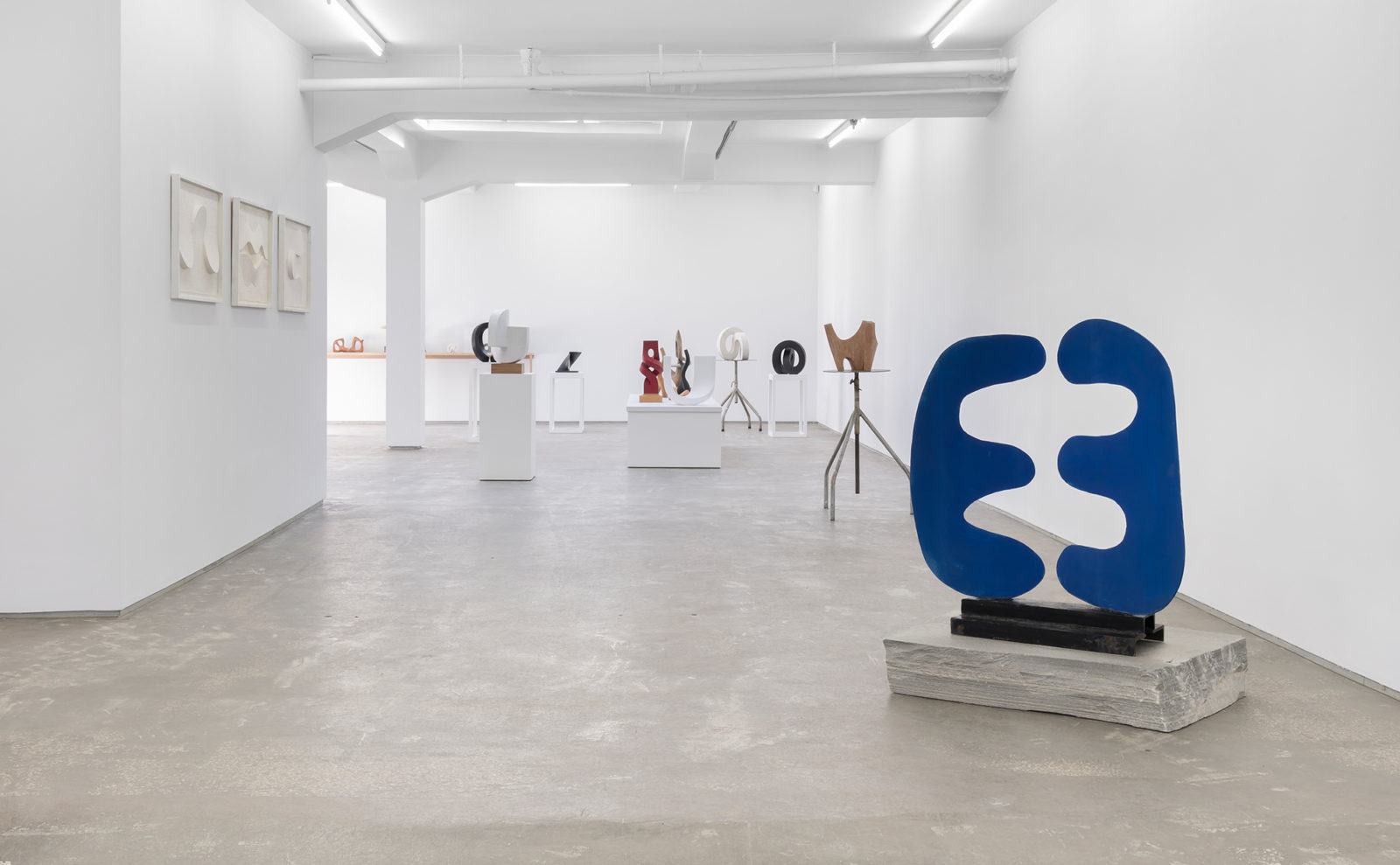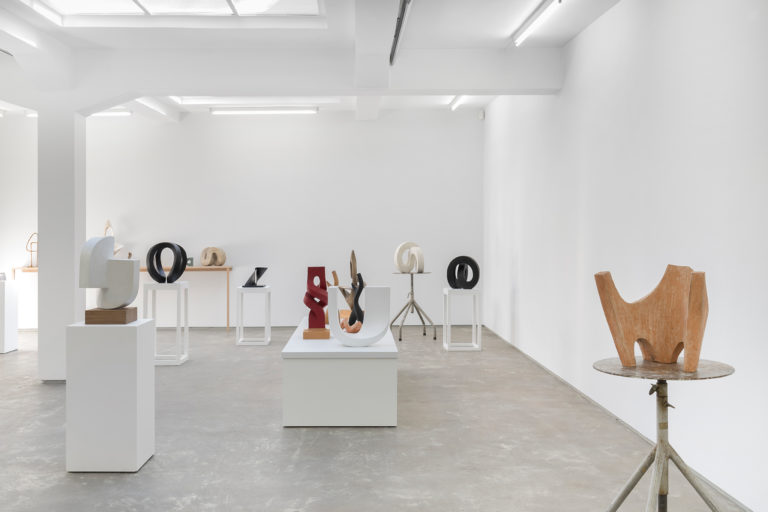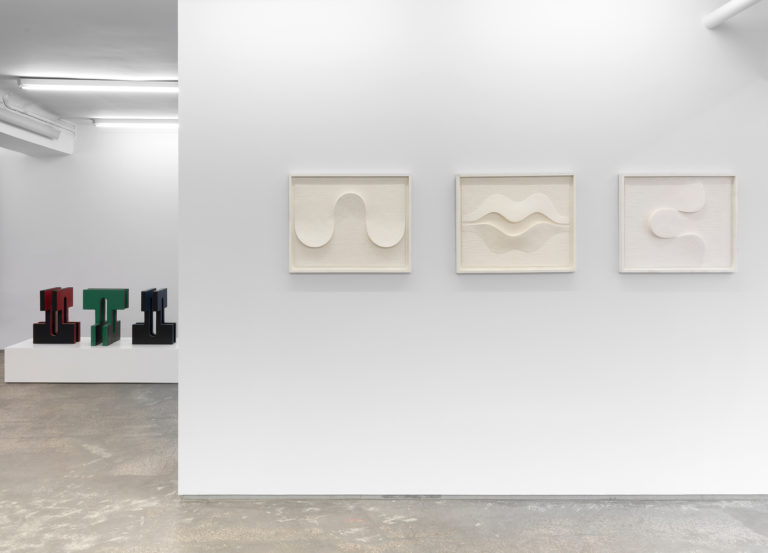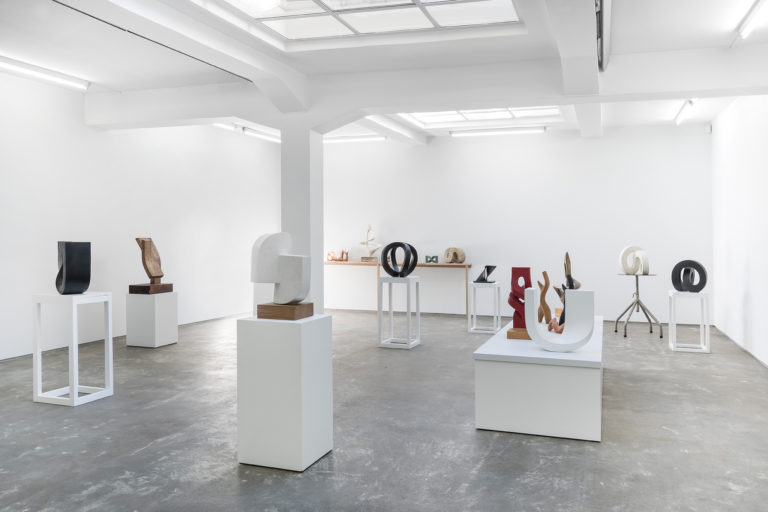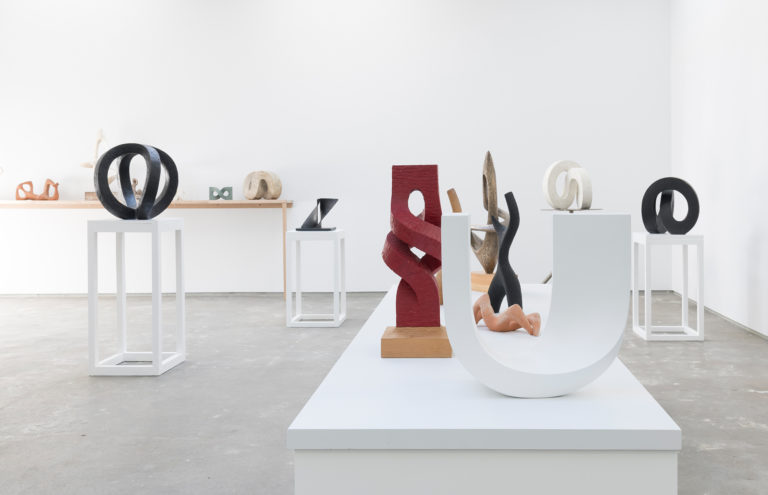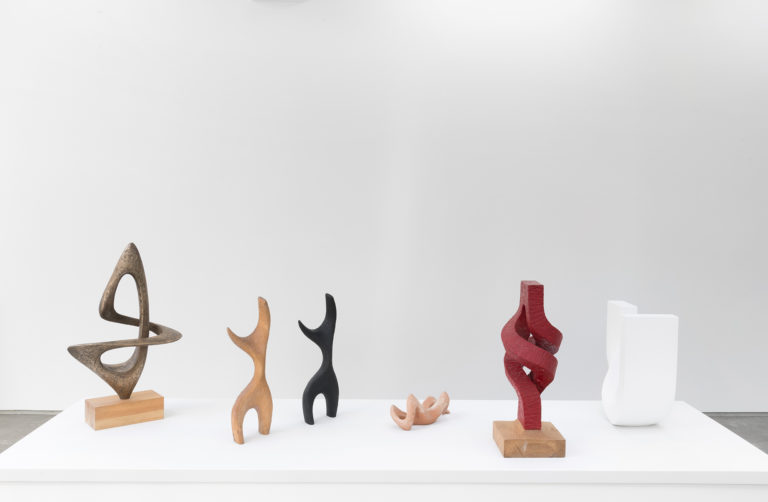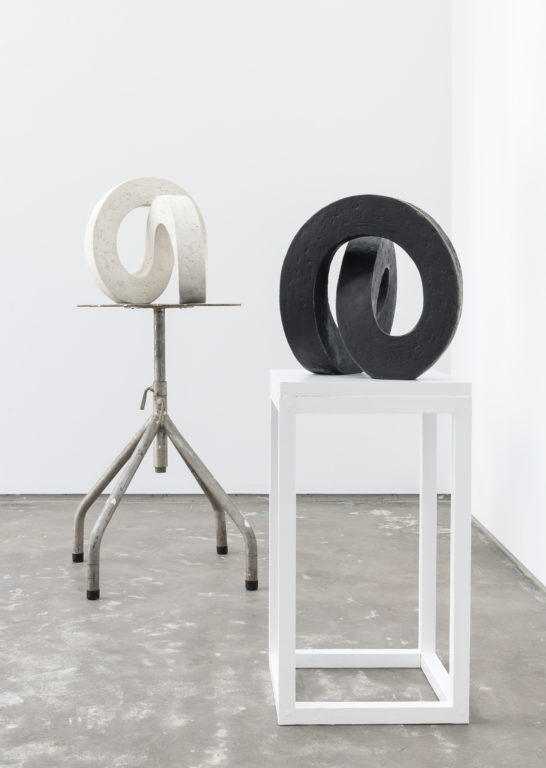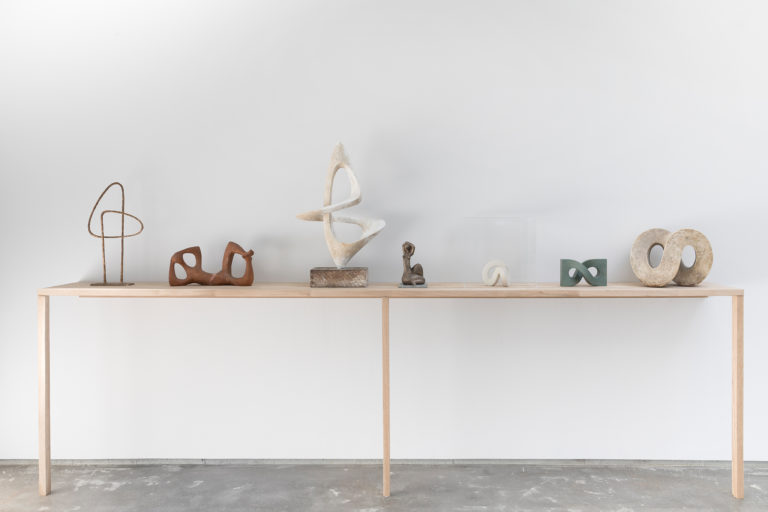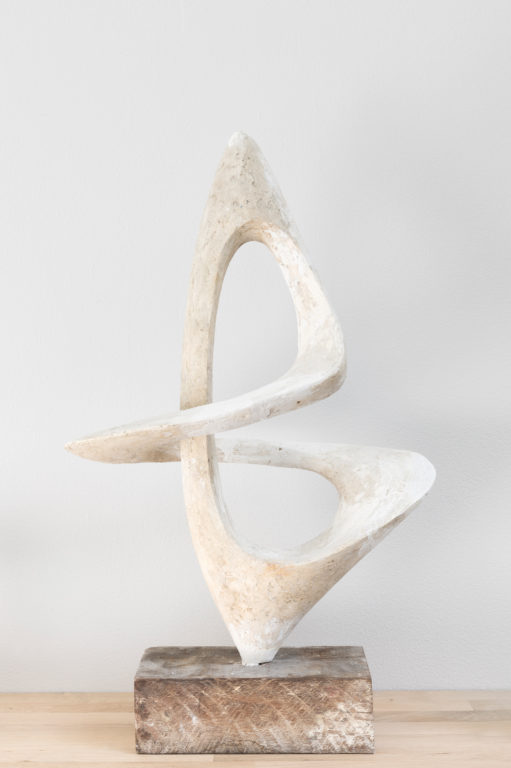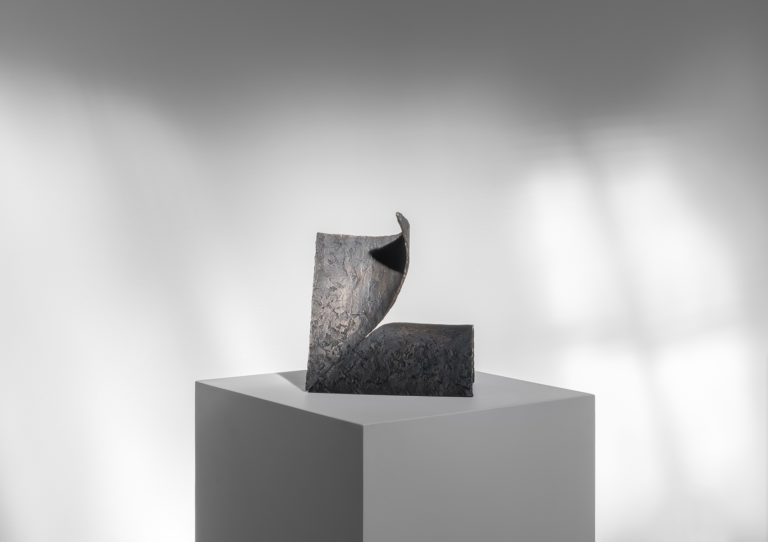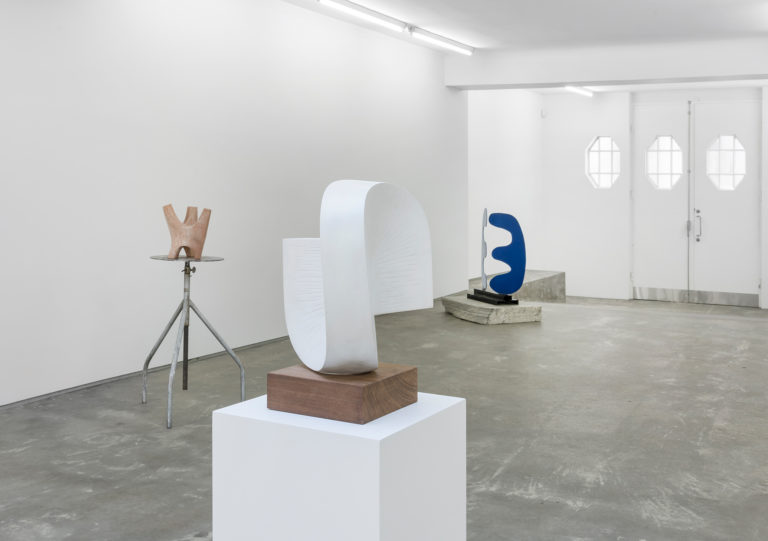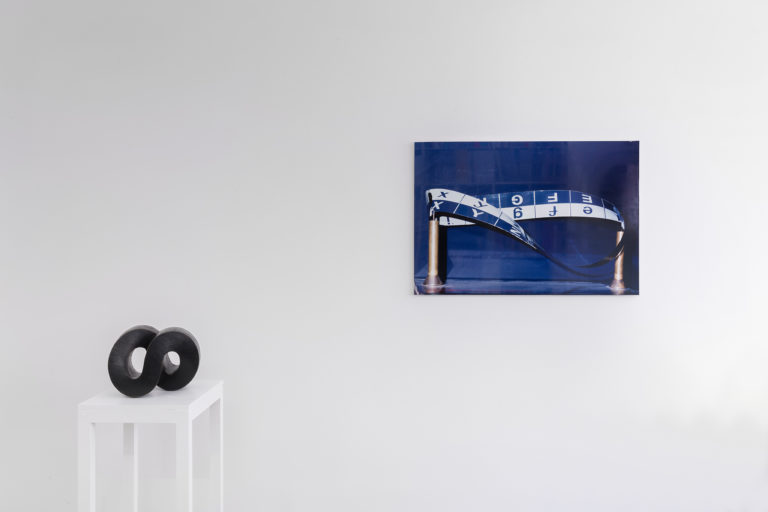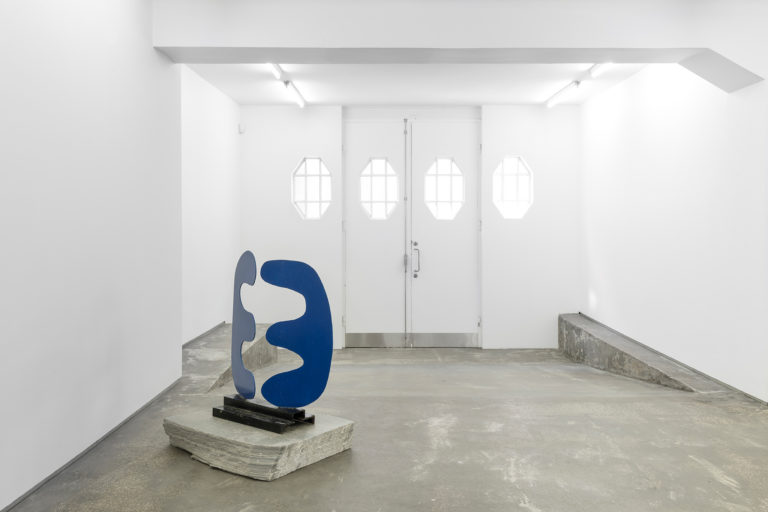Few artists can claim to have had a career with so defined and consistent a core as that of Aase Texmon Rygh. Her achievements spring from her focus on a specific set of issues concerning form, which she has explored throughout her practice – and with little concern for the opinions of either her critics or her peers. Her ability to maintain such focus might owe to the fact that her work does not depend on random or impulsive actions, but instead is led by her need to comprehend the principles of figures and space. Her best-known works are the möbius variations inspired by Henri Poincaré’s mathematical models, abstraction has been at the centre of her practice since its beginning.
One could argue that Texmon Rygh’s desire to work conceptually has shaped how she conducts her studio practice, as it allows her to investigate form and materials. By developing a physical space for daily exploration, she has created something of a laboratory for experimental sculpture. In line with this notion of her studio as a laboratory, there is an emphasis on order where only essential elements are allocated space, negating disturbance. - I recall that the first time I visited Texmon Rygh’s studio, in around 1990, I noticed that most of her early sculptures were still there – a sort of testament to the dialogue between her works across time.
As with many prominent modernist sculptors, it is neither size nor quantity that has the greatest importance in Texmon Rygh’s oeuvre, but the systematic examining of opportunities. Early in her practice, Texmon Rygh removed herself from dependence on the kind of machinery required to produce large sculptures and chose to focus instead on smaller formats. One of the reasons for this was that her first large-scale public commission did not come about until 1967 – a lamentable fact for many. However, when we look at Norwegian sculpture of this period, perhaps we should be thankful that she was left undisturbed in her studio.
As a committed modernist, Texmon Rygh worked on the relationship between idea, execution and substance. She explored several materials, studying their qualities and how they helped shape an idea. She worked with the materials that were dominant in Norway at the time: plaster, bronze and wood; but also explored plastic, terracotta and iron in a pioneering manner. At a later stage some of her sculptures were realised in stone. It is Texmon Rygh’s fundamental curiosity around whether a material can add new aesthetic dimensions to a work that sustains her open-mindedness. Her sense of the material also relates to the opportunities that lie within patina and colour: it is the finishing on a surface that emphasises the sensuality of a form.
Texmon Rygh’s classically-oriented figures emerged through her study of the human body, resulting in an understanding of classical expression and of anatomy. By portraying harmonic proportions and the relationship between body parts, Texmon Rygh began to consider the body in movement. Dance is a recurrent theme, though not through figurative sculptures of dancers but something abstract triggered by the suspense between the static and dynamic. Repetition of shapes that move in different rhythms around an axis, where movement occurs harmonically and logically, have become an important part of Texmon Rygh’s work. She is concerned with how shapes create patterns, specifically the idea of a moving figure at the centre of one’s attention. This is among her central motifs – a result of connections between figures in free motion. The study of the still body and that of the body in movement blends almost unnoticeably into the phase which follows where she frees herself completely from the human form and works largely according to mathematical principles.
Faced with sculptures from different epochs of Texmon Rygh’s career, there is a sensation that there is no contradiction in these different approaches to the creation of visual stories through form.
- Øivind Storm Bjerke
Exhibitions
